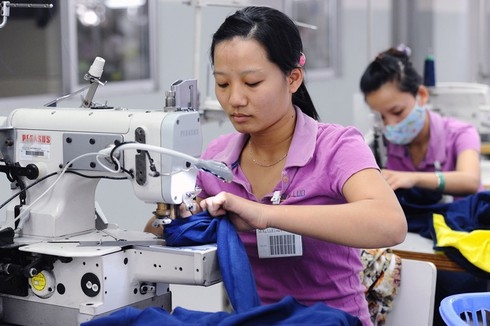Maintaining production – a uphill task for garment sector
VOV.VN - The garment sector is struggling to maintain production in the second half of the year as its export market is forecast to shrink by at least 30-40%, according to Le Tien Truong, General Director of the Vietnam National Textile and Garment Group.
Truong outlined that Vinatex’s total consolidated revenue in the past six months is estimated to decrease by 15% in comparison to the same period last year, while consolidated profits are projected to face a drop of 25%, although these falls are lower than previously forecast.
Despite this difficult time, the majority of Vinatex members made a profit, with the exception of fiber companies due to tensions between the United States and China.
Truong stated that Vinatex’s production facilities have yet to suffer a serious shortage of employment, largely due to growth in its sales of face masks and personal protective equipment (PPE).
However, the executive believed that moving forward into the final six months of the year, the garment sector will face a strong reduction in total export value as the demand for PPE has rapidly decreases. In addition, a large number of enterprises shifting to producing face masks and PPE in recent times has led to an excess supply of products that far outstrips demand.
According to Truong, the COVID-19 pandemic has yet to show signs of abating globally, and no one knows exactly when it comes to an end.
Many countries have begun to lift social distancing measures, not requiring their citizens to wear masks in public. Yet, the employment market has yet to recover, causing an impact on demand for consumer goods.
A number of studies show the average budget for garments and textiles among people remains very limited at present. This means people tighten their belt, which will affect the fashion market in the near future.
Moreover, the decline in demand is set to increase competition between garments firms, making the sector more intense.
In this context, Truong suggested that local enterprises should implement measures to make basic products for customers, while adopting flexible production methods, including accepting non-specialised production plans in the short term.
Domestic businesses should focus on cutting costs, improving competitiveness, and maintaining production during the difficult period, Truong said.

